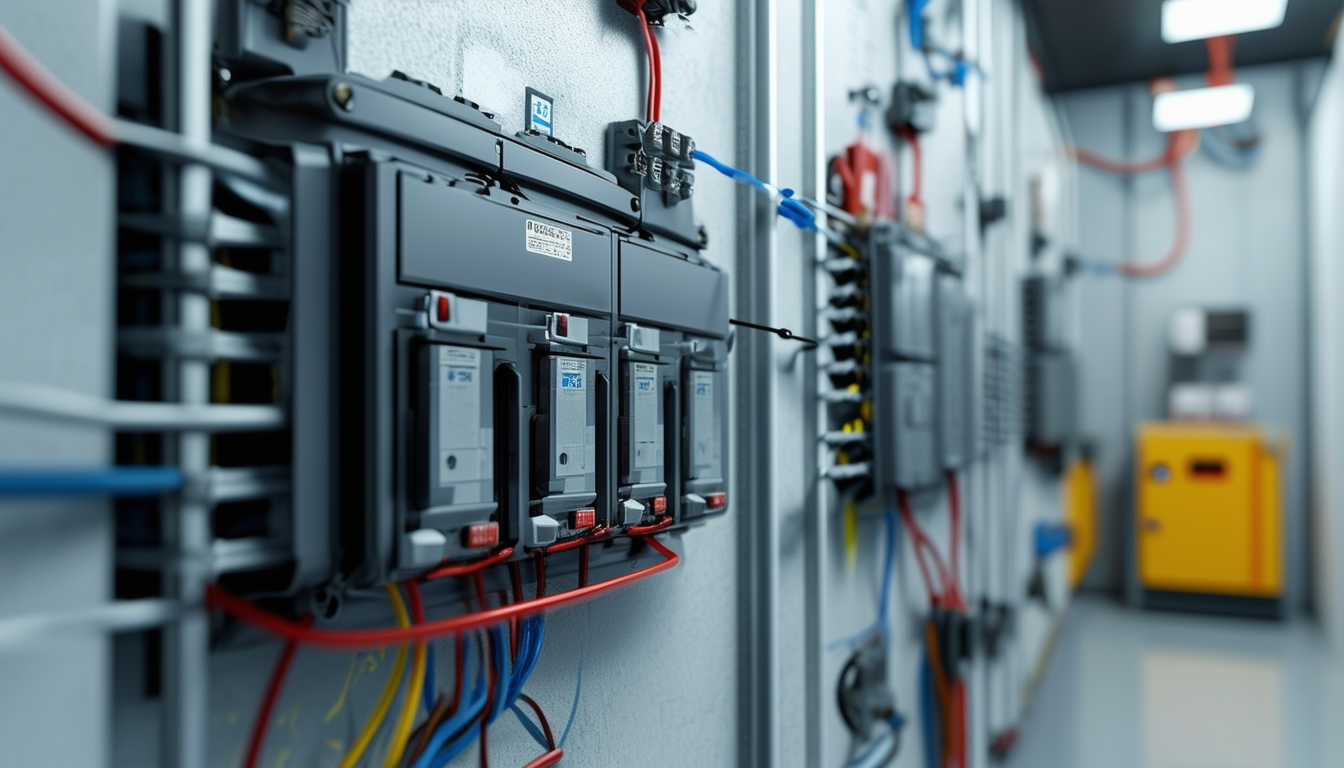THE circuit breaker is an essential element of any modern electrical installation, acting as a safeguard against the risk of fire and electrocution. This is an automatic device that allows you tointerrupt instantly the flow of electric current when overcurrent or short circuit is detected. By playing this crucial role, the circuit breaker not only ensures the safety of people, but also the protection of household appliances and the entire electrical circuit. There are several types of circuit breakers, each adapted to specific needs, making this device an essential part of our daily lives.

The circuit breaker is an essential device for any modern electrical installation. Its main mission is to protect electrical circuits by interrupting the current when an abnormal situation is detected, such as an overcurrent or a short circuit. In this article, we will explore in depth this crucial device, how it works, its different types and its importance for the safety of your electrical installations.
Table des matières
ToggleDefinition and role of the circuit breaker
A circuit breaker is a automatic switch which is generally attached to the electrical panel of your home. Its role is to ensure the safety of electrical circuits. If something goes wrong, it immediately interrupts the flow of power, preventing potential hazards such as fires or electrocution. This is a crucial element in protecting not only electrical devices, but also the people who use them.
How a circuit breaker works
The circuit breaker operates using a mechanism that detects anomalies in the circuit. When the current demand exceeds the safe limits, the circuit breaker calls out a detection system which pushes him to activate a mechanical or electronic system, and cut the circuit. This switching process is quick and efficient, making the circuit breaker essential for the overall safety of the electrical installation.
The different types of circuit breakers
There are several types of circuit breakers, each with specific characteristics and applications. The most common are:
Differential circuit breaker
THE differential circuit breaker is designed to protect people by detecting current leaks. Its ability to break the circuit in the event of an imbalance between current input and output makes it essential for preventing electrocution.
Magnetothermic circuit breaker
THE magnetothermal circuit breaker combines thermal overload and short circuit protection features. It is one of the most used in homes, capable of adapting to different powers and circuit constraints.
Connection circuit breaker
THE connection circuit breaker, also called a subscriber circuit breaker, is generally installed upstream of the electrical panel. It plays a key role in limiting the current entering the electrical installation, thus providing a first barrier of protection.
Importance of a circuit breaker in your electrical installation
Having a working circuit breaker in your electrical installation is vital. Not only does it protect your devices from potential damage caused by anomalies, but it also ensures the safety of people on site. Failures can turn into real disasters if neglected. Investing in a good circuit breaker, therefore, is not just a question of comfort, it is a question of safety.
In summary, the circuit breaker is an essential element of any electrical installation. Its protective role and its ability to prevent dangerous situations make it an essential device. By understanding how it works and the different types that exist, it becomes easier to choose the right circuit breaker for your home or business, thus ensuring the safety of the electrical circuit.
Découvrez toute la gamme de disjoncteurs de la marque Legrand sur notre site : https://t.co/GSist8PNOI #disjoncteur #Legrand #chantier #construction #materielelectrique #renovation #installationelectrique #travaux #maison #appartement #artisan #bricoleur #tableauelectrique pic.twitter.com/EhCCAWdiH6
— 123elec (@123elec) May 3, 2024

























